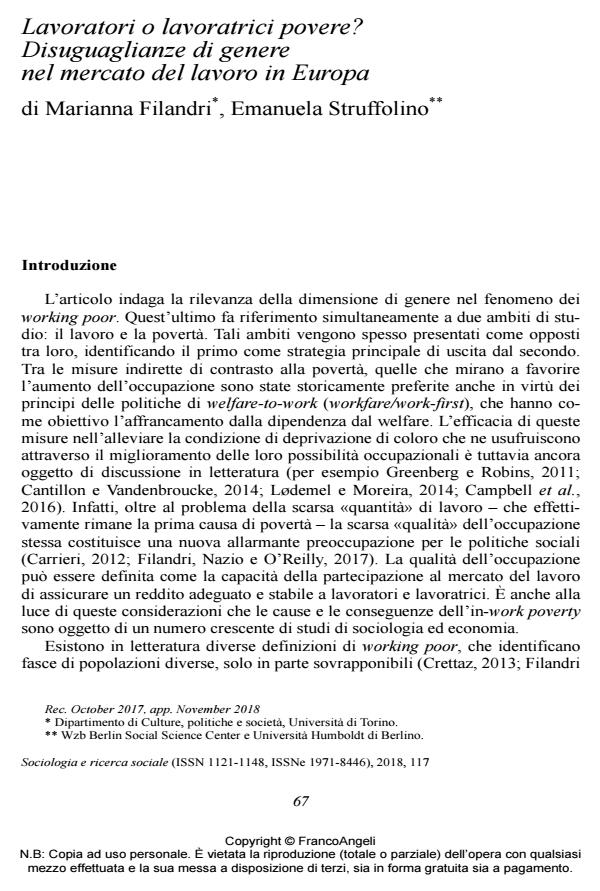Lavoratori o lavoratrici povere? Disuguaglianze di genere nel mercato del lavoro in Europa
Titolo Rivista SOCIOLOGIA E RICERCA SOCIALE
Autori/Curatori Marianna Filandri, Emanuela Struffolino
Anno di pubblicazione 2019 Fascicolo 2018/117
Lingua Italiano Numero pagine 19 P. 67-85 Dimensione file 310 KB
DOI 10.3280/SR2018-117004
Il DOI è il codice a barre della proprietà intellettuale: per saperne di più
clicca qui
Qui sotto puoi vedere in anteprima la prima pagina di questo articolo.
Se questo articolo ti interessa, lo puoi acquistare (e scaricare in formato pdf) seguendo le facili indicazioni per acquistare il download credit. Acquista Download Credits per scaricare questo Articolo in formato PDF

FrancoAngeli è membro della Publishers International Linking Association, Inc (PILA)associazione indipendente e non profit per facilitare (attraverso i servizi tecnologici implementati da CrossRef.org) l’accesso degli studiosi ai contenuti digitali nelle pubblicazioni professionali e scientifiche
This article offers a comparative analysis of gender inequality within the working poor population, across 31 European countries. Our results show that women’s disadvantage in the probability of being working poor is higher in countries where they are employed to a greater extent. Labor market characteristics and work-family conciliation policies connected directly to women’s participation are discussed as salient factors.
Marianna Filandri, Emanuela Struffolino, Lavoratori o lavoratrici povere? Disuguaglianze di genere nel mercato del lavoro in Europa in "SOCIOLOGIA E RICERCA SOCIALE " 117/2018, pp 67-85, DOI: 10.3280/SR2018-117004